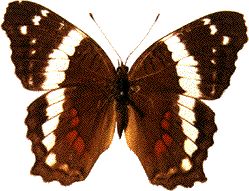Adaptive explanation - How do we study adaptations?

The study of adaptation proceeds in three conceptual stages:
1. Identify, or postulate, what kinds of of genetic variant the character can have.
2. Develop a hypothesis, or a model, of the organ, or character's function.
3. Test the hypothesis's predictions.
A good hypothesis will predict the features of an organ exactly, and the predictions will be testable.
Three main methods are available to test a hypothesis:
• One is simply to see whether the actual form of an organ (or whatever character is under investigation) matches the hypothetical prediction; if it does not, the hypothesis is wrong somehow.
• A second method is to do experiments. It is only useful if the organ, or behavior pattern, can be altered experimentally. For example, Silberglied et al painted out the wing stripes of the butterfly Anartia Fatima (pictured opposite.) The butterflies with their stripes painted out survived equally well as control butterflies: the wing-stripes are therefore probably not adaptations to increase survival. When they are possible, experiments are a powerful means of testing ideas about adaptation.
• The comparative method is the third method of studying adaptation. It can be used if the hypothesis predicts that some kinds of species should have different forms of an adaptation from other kinds of species. Such a hypothesis can be checked by comparing the form of an organ in different kinds of species.
There is much discussion amongst biologists as to whether adaptationist explanations can actually be studied. The philosopher of science Daniel Dennett explains why he thinks that they can.
| Next |



